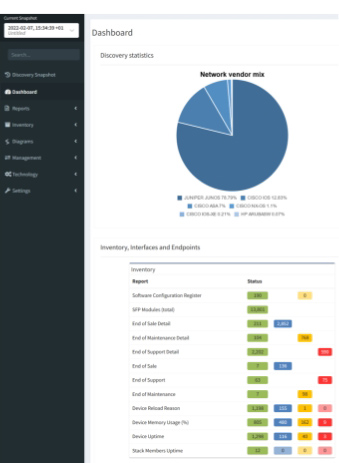In a previous article, we briefly touched upon how the implementation of cloud structures into existing on-premises networks can hinder cross-team collaboration. Cloud and on-prem teams simply function in different realities.
Whilst their differing skills and realities can lead to the formation of dreaded siloes, the situation is not necessarily black and white. Let's look at how the nature of cloud solutions CAN actually assist in breaking down siloes and foster collaboration between them.
Before diving in, it's important to note that collaborative issues existed before the cloud. During the heyday of on-premises networks, teams could still become siloed. There are certain aspects of the cloud that actually helped to break down these more traditional siloes.
For example, when deploying a new application within an instance strictly on-prem, multiple teams would need to be involved in configuring ports, creating and trunking VLANs, etc. Delegating these tasks across teams, potentially across different time zones, could lead to kinks in the communication chain, creating confusion, miscommunications and eventually siloes. With the cloud, this can all be done under the hood. It's more of a case of saying "Spin x up on this IP address and give me the connectivity I need" - letting teams operate faster and more consistently.
Such processes can also be performed with increased accountability thanks to the cloud. Cloud platforms preserve records of activity, establishing more transparent processes. Gone are the days of waiting longer than necessary for another department to fulfill their end of the bargain, or wondering who it was that made a particular change. A quick check lets you know who is responsible for what in case changes need to be made.
The cloud provides a single API for teams to manage their elements, be they Vnets or Kubernetes clusters. The use of a single API improves file sharing, leading to faster handoffs and increased response rates. This lets teams work together more consistently and effectively, as opposed to the '(g)olden days' of on-premises, where teams worked disparately to bring together a patchwork of scripts together into a single process. The process was more fallible to breakdowns in communication, again due to different people working on separate elements of the same process. One error could lead to a delay in the process and require complete reworking later down the line. With a single API to manage from, teams are likely to be more unified and consistent in their approach to new tasks.
What drove more enterprises to adopt the cloud? According to Jose Moreno in the third installment of Community Fabric, there are two reasons that stand out above all - these being financial and risk, as opposed to technical. By implementing the cloud, risk is shared with cloud providers, instead of being a burden bared solely by infrastructure teams. With the risk load being shared with the cloud provider, teams can theoretically spend more time on collaborating and starting new projects (or forging ahead with those in progress), instead of looking over their shoulders for ay boogeymen in the closet that they may have missed.
These are just a few reasons as to why the cloud doesn't have to spell doom for cross-team cohesion. But the cloud can't work miracles. There is still the possibility that teams can, for whatever reason, end up siloed and isolated from their counterparts. Is there another way to help? Enter, Network Assurance!

What exactly creates the gaps in understanding between cloud and network teams? One explanation is that traditional network engineers may not adapt to a cloud team's subject knowledge, skill sets and environments, and vice versa. They're simply not reading from the same hymn sheet (or they're living in different realities, as we said at the start of this post).
For a successful cloud project, however, open collaboration is essential at every stage of cloud adoption - from design through to implementation and operation. 88% of research respondents in a 2021 EMA report believe that on-prem network teams must have visibility and input into cloud design. When they aren't involved early in the process, cloud connectivity is unnecessarily put at risk. As Jose Moreno puts it: "The way that network engineers think - in the layers of the network - is so ingrained, and very valuable, no matter whether you're on-prem or in the cloud. I think that a [cloud] project, without any networking expertise doesn't have much chance at being successful".
With IP Fabric in place, access to critical network intelligence can be democratized to break down siloes between cloud and networking teams. Happy teams that know how to communicate effectively lead to more secure and efficient networks, after all. How does IP Fabric do this? By providing cloud and network teams with a common language through which to collaborate by analyzing private cloud networks (AWS VPCs and Azure Vnets) to understand how they're constructed and connected with on-prem networks. This data is mapped and modelled automatically, with the interactive representation of the network easy to share.
It's clear that adopting a hybrid approach of on-premises and cloud environments isn't strictly a death sentence for collaboration and proactive problem solving. Adding Network Assurance into the mix can help to enhance the already collaborative elements of the cloud and empower teams to better work together.

A recent Gartner prediction that more than 50% of critical business initiatives will utilize cloud platforms by 2027 seems more likely by the day. Cloud is here to stay, and it's going to become an integral part of network management. Despite this, there are still causes for concern when investing in, and implementing cloud solutions - ranging from the rising complexity associated with introducing multi-cloud into an existing network environment through to potential spending waste.
What are some of the prevalent issues that prevent organizations from getting their money's worth from the cloud? How can IP Fabric help?
Adding cloud structures to an existing on-premises network environment increases the overall complexity of said environment. Implementing different cloud vendors, ensuring interconnectivity, and trying to establish visibility that isn't really just a fragmented collection of network information masquerading as true visibility is no easy feat.
A lack of unified overview of the entire network + increased network complexity = a laundry list of visibility and complexity-based issues.
PWC's 2023 Global Digital Trust Insights report indicates that only one in five, or 19% of participating CIOs, CISOs and CTOs are confident that they have taken the necessary steps to secure themselves against breaches in the cloud. Increasing the overall surface area of your network increases the overall potential attack surface of said network after all.
A 2023 report on the state of cloud included a survey on the top organizational cloud challenges faced by both enterprises and SMBs. 82% of enterprise organizations and 80% of SMBs cited 'managing cloud spend' as their top challenge. There are a number of factors that can contribute to cloud-related spending waste:

IP Fabric's ability to discover an entire network and establish up-to-date topologies extends into the private cloud, with analysis of AWS VPCs and Azure Vnets. So, when investing in cloud structures, there won't be any blind spots left.
This also helps battle the issue of growing complexity when factoring the cloud into your network, as these topologies can be used to analyze data flow and device behavior, letting teams identify how different elements within a network are really interacting with each other, including after changes are made.
Furthermore, the unprecedented visibility provided by IP Fabric lets teams maintain connectivity within the cloud. Intent checks can be run to ensure that connectivity issues are avoided or remedied as soon as they appear, on-demand or on-schedule. Should a technical issue occur, teams can rapidly detect whether it's on-prem or cloud-based - reducing the chance that teams play the blame game when it comes to who has to troubleshoot the issue. Less time spent troubleshooting an issue means less chance of incurring loss.
With IP Fabric, you don't need to fear that your increased network surface area means a wider area of exposure for attackers to exploit. IP Fabric scales with the network as devices, and environments, are added - including the cloud.
Where IP Fabric excels from a security perspective is in the ability to provide a clear view of segmentation implemented in an environment. This won't address all of your cloud security concerns, but it does provide confirmation regarding whether the areas of a network that have segmentation implemented are indeed protected.

You can take this even further. IP Fabric's API can be used to integrate with monitoring solutions, like Centreon, which allows for even more detailed insights into how specific devices are performing or if they're performing at all.
Based on the insights teams can take from an integrated monitoring solution, they can discover where they have orphaned resources that currently aren't in use, and can remove these from the network to limit their expenditure to only the essential, in-use elements within their cloud environments.
The shift toward the cloud is inevitable. This means that complexity and spending waste are also likely to increase in step. But with detailed network visibility and network insights provided by Network Assurance, the road to implementation can be a lot smoother than it currently is for a lot of enterprises.
If you'd like to find out how IP Fabric can help you optimize your cloud investment, feel free to try our free, self-guided demo. Prefer the personal touch? Reach out to schedule an obligation-free demo with a member of our dedicated sales team.
The cloud computing business is booming. Yet the massive uptick in cloud adoption seems like a drop in the ocean compared to what's been happening with AI, which has gone from a topic reserved for 1980s sci-fi thrillers set in dystopian futures to a fact of life and business in 2023.
While the more established cloud market is expected to double to more than $940 billion by 2026, the AI market is expected to grow to over $300 billion. Two IT markets experiencing massive growth over the same time period MUST mean they're competitors, right?
Some may see it that way, but we think there's another way to view them.
Cloud and AI technologies can indeed be viewed as competitive from a purely business perspective. It's natural to place them against each other given their respective meteoric rises. Yet if you dig a little deeper, it's clear that these technologies can be symbiotic rather than antagonistic.
AI -> Cloud
Modern cloud computing is capable of managing large-scale computational tasks, data storage and service delivery, allowing teams to access computing resources on-demand and pay for what they use, without having to manage the large resources associated with on-premises maintenance. With such massive amounts of data stored in VMs across the world, AI can lend a hand in making enterprises more scalable and cost effective.
AI is already being used as a form of "assisted intelligence" to automate tasks that are time-consuming when performed manually by "human intelligence". Processes such as data analysis can be managed by AI services - allowing for interpretations of data-driven insights without manual effort required from engineers in the cloud.
Cloud -> AI
Conversely, storing data in the cloud can be used to feed data to AI. The cloud is suited for running algorithms which can be used during AI training periods (typically when data demands are at their highest). This lets enterprises scale up or down to suit their needs by building infrastructure scaled for the maximum load needed when training AI algorithms. The benefits of this - increased scalability and cost-effectiveness without the same manual input - can be used to focus efforts on more innovative activities.
Then there's the recent concept of "Artificial Intelligence as a Service" or AIaaS. AIaaS is already happening in practice today - see AI-driven chatbots, in which cloud platforms can store and process data captured by chatbots.
Sounds good to us. But what are the positives and negatives of leveraging AI in the cloud?

Cost - Machine Learning models are usually run on machines utilizing multiple GPUs. When using public and/or private cloud to host these models, operational costs can be reduced. (Beware however, this might not always be the case).
Automation - Using AI in the cloud lets teams automate tasks like data analysis which frees up time for more innovative tasks. AI therefore streamlines workloads for engineers in network and cloud teams alike.
Productivity - Improving how we automate repetitive tasks naturally means increased productivity for network engineers and infrastructure managers alike. AI-based algorithms typically require time and effort to not only build, but also to test in production. Leveraging centrally managed cloud resources gives IT teams time back to focus on operational priorities for the future.
Complexity - Introducing AI into the cloud mix increases complexity, particularly for ensuring regulatory compliance. As AI allows for vast amounts of data to be processed at a given time, ensuring adherence to various regulatory guidelines, including GDPR and CCPA, becomes more difficult.
Dependency - Using AI for data analysis can lead to a dependency on AI technology. As they continue to become more ubiquitous, enterprises are more than likely to become increasingly reliant. If there's an outage, a system failure, or a security breach, this could potentially lead to widespread service disruption that some may struggle to rebound from without a proper alternative plan in place.
Transparency - Deep learning models are inherently complex (shock). This takes interpreting, diagnosing or addressing issues to a new level of complexity. Of course, this makes troubleshooting harder. As the number of AI users increases globally, the likelihood of issues occurring that require a deep understanding of AI models increases in step. Making AI models more transparent, or developing the ability to understand them more coherently is essential for the future.
There are clearly both advantages and disadvantages to leveraging AI technology in the cloud. It is clear to see though, that AI and the cloud are not competing forces. In fact, they can be seen as great complements to each other that, if used correctly, can provide a great boost for data analysis, management and automation.
This is without considering how these technologies, particularly AI, will evolve in the future, and how the disadvantages above will be addressed and resolved by innovators in the AI realm. As things stand though, the sky is the limit for this power couple in waiting.
Don't forget to head over to LinkedIn, where you can keep up with the latest developments from IP Fabric. Check out our blog here, where we regularly publish new content on all things networking.


